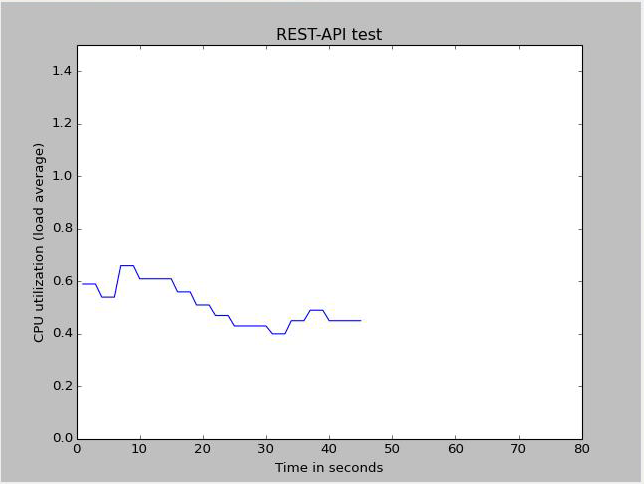Submitting a GET Request to the REST API
For an rpc command, the general format of the endpoints
is:
scheme://device-name:port/rpc/method[@attributes]/params
-
scheme:httporhttps -
method: The name of any Junos OSrpccommand. Themethodname is identical to the tag element. For more information, see the Junos XML API Explorer. -
params: Optional parameter values (name[=value]).
To
authenticate your request, you can use one of the following methods. We recommend
using the netrc option because it is more secure.
-
Submit the base64-encoded username and password included in the Authorization header.
curl -u "username:password" http://device-name:port/rpc/get-interface-information -
Alternatively, use a .netrc file to store the credentials.
In the user's home directory, create the .netrc file, and specify the hostname, username, and password for the remote device. For example:
user@host:~$ cat ~/.netrc machine 172.16.2.1 login username password password
Ensure that only the user has read and write permission for the file.
user@host:~$ chmod 600 .netrc
In the request, specify the
--netrcoption. For example:user@host:~$ curl --netrc http://172.16.2.1:3000/rpc/get-interface-information
To specify rpc data as a query string in the URI for GET
requests, you can use a ? following the URI with the
& delimiter separating multiple arguments, or use the
/ delimiter, as shown in these equivalent cURL calls:
For example:
curl --netrc http://device-name:port/rpc/get-interface-information?interface-name=cbp0&snmp-index=1curl --netrc http://device-name:port/rpc/get-interface-information/interface-name=cbp0/snmp-index=1
HTTP Accept headers can be used to specify the return format using one of the following Content-Type values:
-
application/xml (the default)
-
application/json
-
text/plain
-
text/html
For example, the following cURL call specifies an output format of JSON:
curl --netrc http://device-name:port/rpc/get-interface-information?interface-name=cbp0 --header "Accept: application/json"
You can also specify the output format using the Junos OS RPC's
optional format parameter.
For example, the
<get-software-information> tag element retrieves software
process revision levels. The following HTTPS GET request executes this command and
retrieves the results in JSON
format:
https://device-name:port/rpc/get-software-information@format=json
The
following Python program uses the REST interface to execute the
get-route-engine-information RPC, extracts the data from the
response, and plots a graph of the CPU load average. The requests
module automatically checks the user's .netrc file for
credentials associated with the specified device. Alternatively, you can include the
auth=(username, password )
argument in the request to supply credentials.
import numpy as np
import matplotlib.pyplot as plt
import matplotlib.animation as animation
import requests
def update_line(num, data, line):
if num == 0:
return line,
global temp_y
x_data.append(num)
if num != 0 and num%8 == 1:
r = requests.get('http://' + device + '/rpc/get-route-engine-information@format=json')
if r: temp_y = r.json()['route-engine-information'][0]['route-engine'][0]['load-average-one'][0]['data']
y_data.append(float(temp_y))
line.set_data(x_data, y_data)
return line,
device = input('Enter device:port ')
temp_y = 1
fig1 = plt.figure()
x_data = []
y_data = []
l, = plt.plot([], [])
plt.xlim(0, 80)
plt.ylim(0, 1.5)
plt.xlabel('Time in seconds')
plt.ylabel('CPU utilization (load average)')
plt.title('REST-API test')
line_ani = animation.FuncAnimation(fig1, update_line, 80, fargs=(0, l), interval=1000, blit=True)
plt.show()
